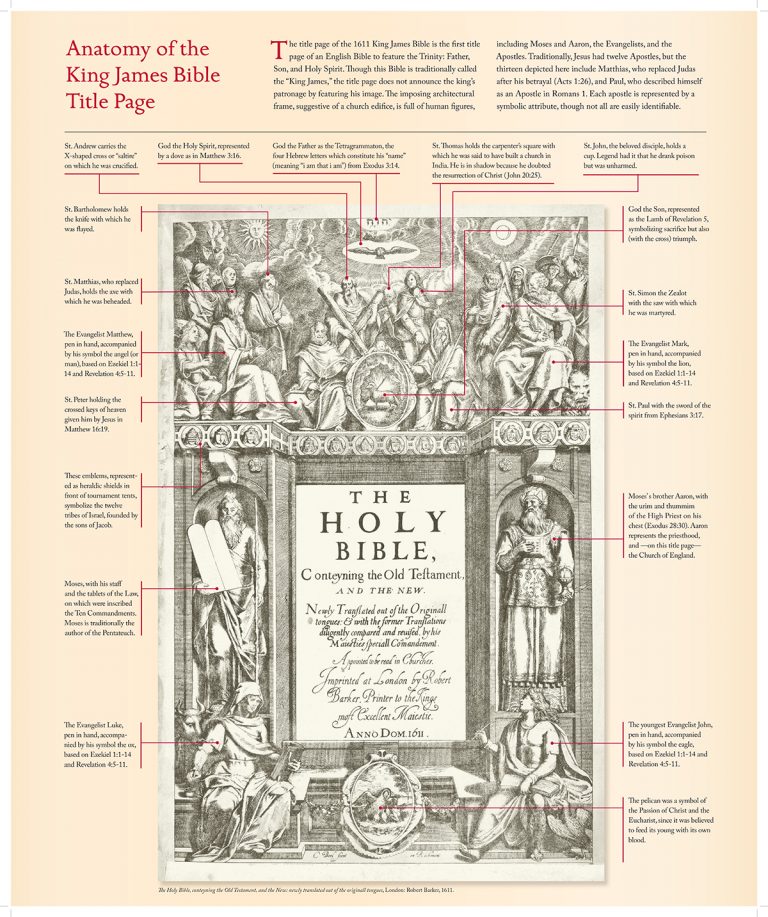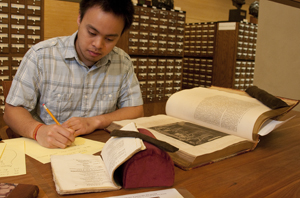The 1991 Martin Scorsese–directed thriller Cape Fear may seem an unlikely candidate for documenting the use and influence of the King James Bible, but its central character, Max Cady, as played by Robert De Niro, wielded biblical verses like weapons. This aspect of Cady was absent in both the original… read more
In the Galleries: Anatomy of the King James Bible title page
The title page of the 1611 King James Bible is the first title page of an English Bible to feature a depiction of the Trinity: Father, Son, and Holy Spirit. Though this Bible is traditionally called the “King James,” the title page does not announce the king’s patronage by featuring… read more
Your Humble Serpent: “Book Snake” and “Book Worm” are unsung Reading Room companions
Though seldom spoken of, the “book snake” has been a staple for patrons in the Ransom Center’s reading room for many years, while its smaller cousin, the “book worm” has appeared more recently. The story behind these creatures, often seen draped over the sides of books or nestled between the… read more




